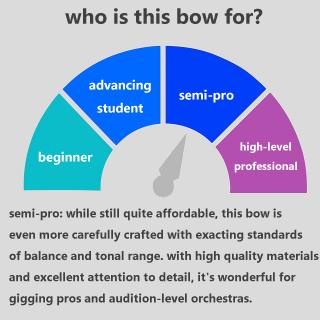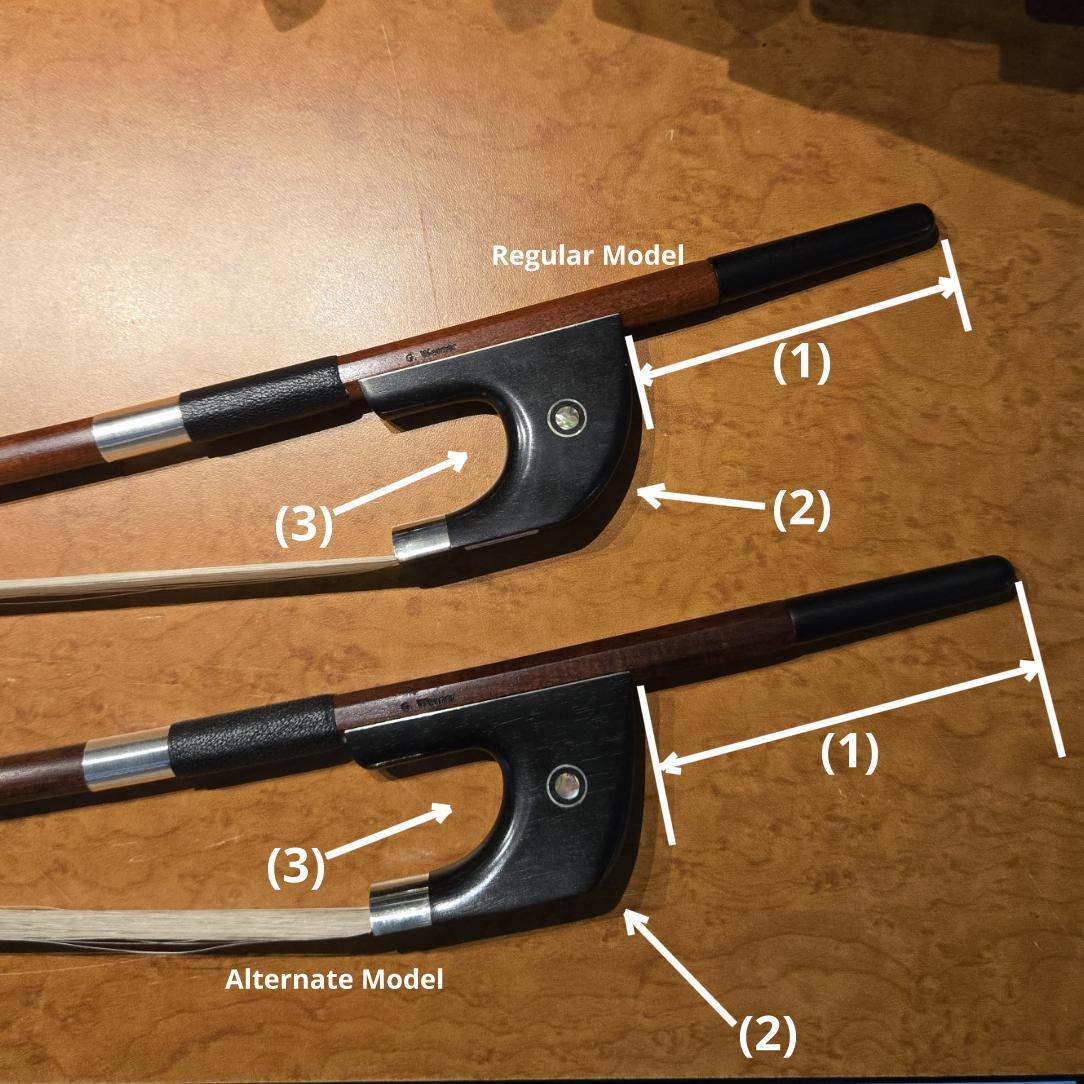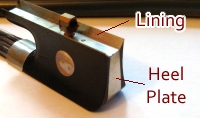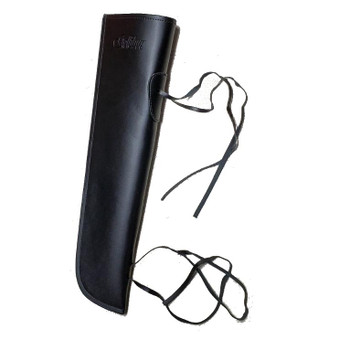G. Werner, Germany
G. Werner European Pernambuco Double Bass Bow
We ship worldwide! (Read this)
- FREE SHIPPING:
- To all 50 US States
Description
 We introduce to you the G.Werner Pernambuco Bass Bow. These bows are handmade in Bubenreuth, Germany (by Dorfler,) from select Pernambuco wood that has been perfectly aged and seasoned for approximately 30 years. Each stick is evaluated for its acoustic potential and graded by experienced bowmakers.
We introduce to you the G.Werner Pernambuco Bass Bow. These bows are handmade in Bubenreuth, Germany (by Dorfler,) from select Pernambuco wood that has been perfectly aged and seasoned for approximately 30 years. Each stick is evaluated for its acoustic potential and graded by experienced bowmakers.
The German bows are half-lined and the French bows are fully lined with a three-part button and Parisian eye. Both bows have a classic look and feel to the real ebony frog and the mechanical parts; both feature a genuine select, aged Pernambuco round stick. The leatherette grip and silver winding add comfort and proper weight bias for balance. Both are haired with natural white (not bleached) horsehair, and have an excellent feel and pretty neutral balance, suitable for both solo work and general orchestral play.
Size/Weight
These bows are considered 3/4 size (though be aware that there are no strict rules on sizing). The French bow is approx. 28 1/4 inches end to end while the German bow measures approx. 29.5 inches. The French bow was a little over 21.5 inches of playable hair length, while the German bow has a little under 21.5.
Weight can vary a small bit from bow to bow, but they're actually reasonably consistent. A representative French bow weighed around 128 grams, with the German/Butler at about 132 grams.
Who's this bow for?
It's an excellent "step-up" bow for an intermediate student, college bass major, or working semi-pro or professional player, who maybe isn't quite ready to commit to the expense or custom nature of a bespoke, hand-made bow (or a very fine second-hand bow). The maker suggests that they are "ideal for advancing players beyond their 4th year of study that can discern subtleties in sound and bow response."
Werner uses only select woods that have been perfectly aged and seasoned.
How does this bow fit into our lineup?
Our "house brand" Pernambuco and Brazilwood bows, which are crafted in China, have been unmatched for their value and quality for over two decades. They have a stellar reputation, and have garnered many positive reviews over the years from players that report that they have taken over the "#1 Spot" away from far more expensive bows.
But, for a long time, they've been the only wooden bows we offer; all of our "step-up" options have been carbon-fiber offerings - which, while very good, may not be everyone's cup of tea. And, some folks have a predisposition for musical instruments and accessories that are made in Europe rather than in Asia. So we've had a bit of a "blind spot" in the bow selection for a while.
Directly compared to our Chinese-made bows, these bows offer upgraded feel and quality, as well as European provenance - but still at an affordable pricing level and high level of consistency, so you can be comfortable ordering these bows online.
Once you've graduated above this bow's level, you might be best off not shopping on the internet for a bow - when you start considering spending well into four figures, those bows are best auditioned in person with the direct assistance of the bowmaker or guidance from a luthier.
* ALTERNATE MODEL GERMAN BOW (if available)
We recently acquired a couple of slightly different German bows from G.Werner; they are the same quality and have the same hair and stick, but a few "frog-related" differences that you might find interesting. See photo to the right - the top bow is the "regular" German bow and the bottom bow is the alternate model (limited availability).
- The frog is positioned further down the stick on the alternate model - this has several effects:
- The part of the stick between the frog and the screw is longer, giving more space for the crook of your hand.
- The stick being the same length as the other bow means that the overall playable hair length is about 0.75 in. (3/4") shorter on the alternate bow, due to the positioning of the frog further along the stick.
- The balance of the bow is altered slightly by this change in geometry. I suppose that it plays like a slightly shorter bow, so it might be good for a smaller-stature player, or perhaps for solo repertoire use?
- The frog has a more "squared" outer edge for a blockier feel. Personally, I actually prefer the feel of this shape, but I'm not a trained German bow player, and that's subjective.
- The throat of the frog also has a different profile to it - again, a subjective difference. Perhaps in comparison to your current bow, you may find that one or the other is closer to a shape to which you're already accustomed.
We only have a couple of these alternate bows - if it's available to add to your cart, we still have at least one in stock. If it's not an option in the drop-down menu, we've sold out of the alternate model.
 What the heck is Pernambuco?
What the heck is Pernambuco?
Pernambuco (Pau Brasil) is a particular tree of the Brazilwood (Leguminosae) family that is traditionally prized for bow making; it's somewhat expensive to obtain, so a true Pernambuco bow is often also more expensive than a "Brazilwood" bow (which can be made of one of several woods that are generically called "Brazilwoods" - see more details in the next paragraph). We do have Brazilwood bows available, if your bass budget is tight but you still want a quality wooden bow that won't hold you back. You can find these bows on our site as well.
A little more learnin' for ya:
Brazilwood is not actually a specific wood, but a named grouping of closely related woods (several trees of the family Leguminosae, if you want to geek out a bit.) This grouping of woods is wonderful for making bows; they have straight grain, wonderful acoustic properties, and a warm reddish color. Further geeking out: the color is where it gets its name; Portuguese explorers finding the trees on the South American coast found that the wood yielded a valuable red dye, and named the tree pau brasil, meaning, loosely, "red wood." Trivia time: That's where the country of Brazil got its name!
Pernambuco is a particular tree of the Brazilwood family that is traditionally prized for bow making; it's more expensive to obtain, so a true Pernambuco bow is often also more expensive. That said, prices on Pernambuco bows can be all over the place; there are much cheaper ones to be found on auction sites like eBay, and much more expensive (into the several thousands of dollars!) Pernambuco bows are available from other shops. As with most anything, it's not just the base materials, but quality and craftsmanship that matter. Your bow is as much a musical instrument as your bass is.
 * Fully Lined/Half Lined:
* Fully Lined/Half Lined:
Nicer bows have a metal lining, usually of nickel or silver, which is fitted to the top surface of the frog, to allow the frog to glide smoothly along the surface of the stick when tightening and loosening the bow hair. This is called a "half lining," which is featured on these bows. Additionally, the French bows also can have a heel plate, which is an matching, inlaid metal piece that rounds the corner on the back of the frog, down around to the pearl slide on the bottom; the addition of this heel plate to a half-lined bow is what makes a bow "fully lined." The heel plate is rarely used on German bows because of the different profile of the back of the frog, so it's not a "downgrade" not to have a heel plate on a German frog; it's actually pretty normal and expected.
Do you do Bow Trials?
AN IMPORTANT NOTE ABOUT BROKEN BOWS:
A wooden bow is a fragile musical instrument in and of itself. Especially when under tension, a simple rap against a hard surface (like the post of a music stand) can easily break a bow. Bumping into a bow that is perched on the lip of a music stand is also a common "maker of unhappy bassists" -- the bow hits the floor, and suddenly the stick is in two pieces. I really hate taking those phone calls, because I feel bad - I really do - but it really is exceedingly rare that it's the bow's fault.
Breakage from seemingly innocuous raps against a chair leg is not a sign of a "defective" bow, any more than shattering a glass vase by grazing a marble countertop would be considered the fault of the vase.
We STRONGLY recommend that you (or your children) exercise prudent care with ANY wooden bow, whether bought from us or not.
There are bow "holders" available to help keep them safe; we sell bow quivers (a leather bow "holster" that ties to the tailpiece) as well as inexpensive hooks that clip onto the music stand, providing a safer means for putting the bow down for pizz sections.
Allergy Note: The lining and some metal parts of these bows contain Nickel.
1 Review
-
G. Weber German bow
This is the 1st really good bow I’ve ever owned and it was a good decision to buy. The frog fits my hand really well, the bow is well balanced, it grips the string quickly with a nice, smooth feel. The MD on the 1st show I used it on really liked the sound. Thanks Mark!























 Make any Bow a "Package!"
Make any Bow a "Package!"




